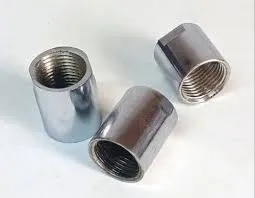-
Cangzhou Yulong Steel Co., Ltd.
-
Phone:
+86 13303177267 -
Email:
admin@ylsteelfittings.com

Dec . 05, 2024 10:16 Back to list
Exploring the Applications of API 5L Grade B PSL2 for Pipeline Projects
Understanding the API 5L GR B PSL2 A Comprehensive Overview
The API 5L standard is one of the most crucial specifications for line pipes used in the oil and gas industry. Published by the American Petroleum Institute (API), this standard dictates the requirements for the manufacture and testing of pipes that transport gas, water, and petroleum products. Among the various grades and specifications outlined in this standard, API 5L Grade B PSL2 stands out for its reliability and mechanical properties, making it a popular choice among the industry’s leading manufacturers and contractors.
Grade Levels Explained
API 5L pipes are categorized into different grades based on their strength and chemical composition. Grade B is one of the most widely used grades, known for its excellent weldability and ductility. It serves as a key component in pipelines where moderate strength and corrosion resistance are necessary. The PSL in API 5L denotes Product Specification Levels – specifically, PSL1 and PSL2, which refer to quality and technical requirements.
Differences Between PSL1 and PSL2
PSL2 pipes are generally required for more stringent applications and are characterized by enhanced mechanical properties and tougher testing conditions compared to PSL1. For instance, PSL2 mandates more rigorous testing for toughness and ductility, ensuring that the pipe can withstand high levels of stress. This is particularly important in environments that experience rapid temperature changes or significant pressures. Furthermore, PSL2 requirements include a more comprehensive set of inspection tests, including non-destructive testing (NDT) methods like ultrasonic or radiographic examinations, which help identify any potential flaws within the material.
api 5l gr b psl2

Application Areas
API 5L GR B PSL2 pipes are predominantly used in the construction of transmission pipelines for oil and gas. They are vital for transporting crude oil, natural gas, and various petroleum products across long distances. Additionally, these pipes find applications in the construction of water pipelines and structural components in various engineering projects. Their robustness and adaptability make them suitable for high-pressure environments, and they are employed in offshore platforms, refineries, and chemical processing plants.
Material Composition and Mechanical Properties
The material composition of API 5L GR B PSL2 typically includes carbon, manganese, phosphorus, sulfur, and silicon. The specific percentages of these elements control the mechanical properties of the pipe, enabling it to exhibit favorable characteristics like strength, toughness, and corrosion resistance. For API 5L GR B, minimum yield strength is approximately 248 MPa (36,000 psi), with a minimum tensile strength of 414 MPa (60,000 psi). With such specifications, these pipes are designed to support significant pressures while maintaining structural integrity.
Conclusion
In summary, API 5L GR B PSL2 represents a critical specification within the realm of pipeline construction. It provides engineers and contractors with a reliable option for demanding applications, ensuring that the transported materials are safe and secure. The advanced mechanical properties, stringent quality regulations, and rigorous testing protocols make API 5L GR B PSL2 an excellent choice for various applications in the oil and gas sector. As industries continue to evolve and face new challenges, the importance of high-standard materials like API 5L GR B PSL2 cannot be overstated. Proper knowledge and understanding of this specification facilitate the successful design and implementation of pipeline projects worldwide.
Latest news
-
ANSI 150P SS304 SO FLANGE
NewsFeb.14,2025
-
ASTM A333GR6 STEEL PIPE
NewsJan.20,2025
-
ANSI B16.5 WELDING NECK FLANGE
NewsJan.15,2026
-
ANSI B16.5 SLIP-ON FLANGE
NewsApr.19,2024
-
DIN86044 PLATE FLANGE
NewsApr.19,2024
-
DIN2527 BLIND FLANGE
NewsApr.12,2024
-
JIS B2311 Butt-Welding Fittings LR/SR 45°/90° /180°Seamless/Weld
NewsApr.23,2024
-
DIN2605-2617 Butt-Welding Fittings LR/SR 45°/90°/180° Seamless/Weld
NewsApr.23,2024











